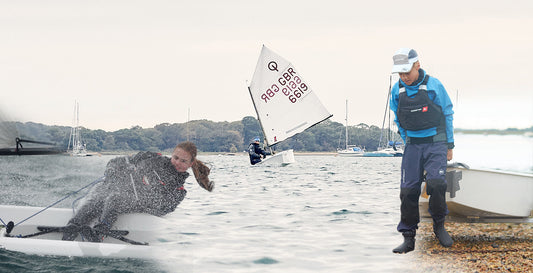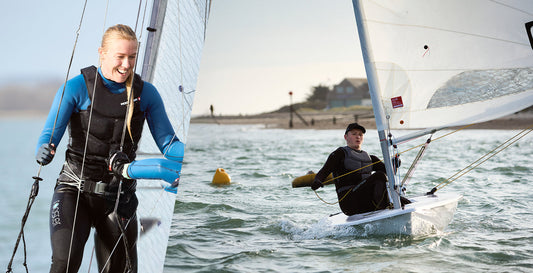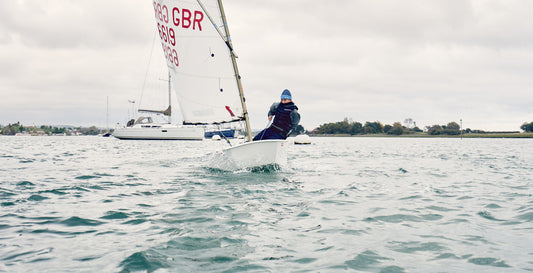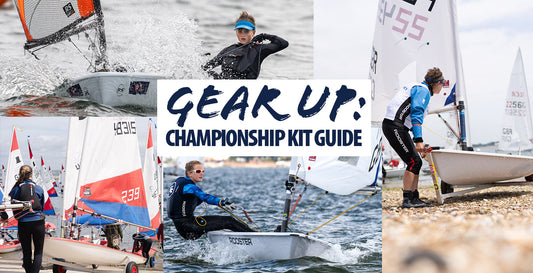En Rooster creemos que la ropa técnica debe adaptarse a ti, no ponerte límites. Por eso, el desarrollo de nuestros Women’s Technical Shorts 2.0 ha sido un proceso muy cuidado: más de tres años de trabajo, moldeados por la experiencia, el feedback y una visión clara de rendimiento.
No son “un pantalón corto más”: son el resultado de escuchar a mujeres, probarlos con mujeres y diseñar para cuerpos reales y condiciones reales de navegación.
Hechos para mujeres reales
Desde el inicio teníamos una misión clara: crear unos shorts técnicos de vela que realmente se ajustaran a las mujeres —de todas las tallas, alturas y formas—, manteniendo un diseño limpio que también se pudiera llevar fuera del agua.
No queríamos una simple versión reducida o “pintada de rosa” de los shorts de hombre. Queríamos algo que funcionara porque estaba hecho para mujeres, no a pesar de ello.
Tuvimos la suerte de contar con el equipo perfecto: en nuestra oficina trabajan mujeres activas, apasionadas del deporte al aire libre —regatistas, corredoras, escaladoras y remeras—. Su feedback honesto y práctico nos ayudó a perfeccionar el corte, la altura de la cintura, el largo de la pierna y el ajuste de la elasticidad.
Cuando ya teníamos un prototipo casi final, invitamos a un grupo reducido de regatistas y entusiastas del outdoor a probar todas las tallas, de la más pequeña a la más grande. No eran modelos, sino mujeres reales, con aportaciones valiosísimas. Esta convocatoria la hicimos abierta en nuestras redes sociales, invitando a regatistas a dar su opinión y ayudarnos a pulir el diseño.
El resultado: comentarios esenciales, desde ajustes en la construcción de la cintura, sensaciones sobre el tejido, hasta sugerencias de color y estilo. Todo ello dio forma al producto final.
“Me impresionó que Rooster buscara mejorar el ajuste de la ropa técnica para mujeres. Ha sido interesante formar parte del proceso y ver todo el esfuerzo que conlleva elegir un diseño.” — Sam Norton (grupo de prueba)
Por qué tardamos más de 3 años
Lanzar un producto técnico específico para mujeres es una gran decisión. El mercado de ropa de vela femenina es más reducido y los mínimos de producción no siempre facilitan las cosas. Pero este proyecto era importante, no solo por la prenda en sí, sino porque sabemos el valor que tiene un buen equipamiento para las mujeres activas en el deporte.
En la última década, la gama Rooster ha evolucionado para incluir alternativas femeninas en la mayoría de nuestros productos clave. Siempre que podemos, creamos opciones específicas para mujeres y, cuando no es viable, consideramos el ajuste femenino en el diseño unisex, asegurando versatilidad e inclusión.
Sabíamos que unos shorts diseñados exclusivamente para mujeres exigían acertar en cada detalle, y esperar al momento adecuado para lanzarlos con garantías.
Esto no es solo un nuevo producto: es parte de un compromiso mayor. En Rooster estamos orgullosos de apoyar a las mujeres en todos los niveles de la vela, desde la participación de base hasta la competición de alto rendimiento. Nuestra colaboración en iniciativas como el Women’s Open Keelboat Championship (WOKC), el Magenta Foiling Project y nuestro apoyo continuado en clases como los J/70, reflejan el camino que estamos construyendo.
Las mujeres aún representan una minoría en la vela —aprox. un 20–25% a nivel mundial, y menos en clases técnicas como sportsboats y keelboats—. Pero esa cifra está creciendo, y estamos orgullosos de ser parte de ese avance.
Para nosotros, la inclusión y la innovación en ropa técnica femenina no son un añadido, sino un pilar de lo que hacemos.
Donde la función se une al propósito
Estamos emocionados de lanzar nuestros Women’s Technical Shorts 2.0, un producto en el que hemos trabajado con pasión.
Combinan:
Corte técnico favorecedor, diseñado para el movimiento activo.
Altura de cintura optimizada para comodidad y soporte.
Elasticidad y flexibilidad en los puntos clave.
Largo de pierna ideal para cubrir y dar confort.
Refuerzo de tejido duradero en la zona de asiento, para resistir el uso intensivo en cubierta.
Detalles prácticos: bolsillos en la pierna, trabillas para cuchillo de seguridad, compartimentos internos para pads opcionales, cierre seguro en la cintura y más.
Y, por supuesto, están creados sobre las mismas bases técnicas que nuestros reconocidos shorts masculinos, probados durante más de cinco años en el agua.No podemos esperar a que los pruebes.Descubre más en el siguiente vídeo.




 Select Store
Select Store
 US
US
 UK
UK















